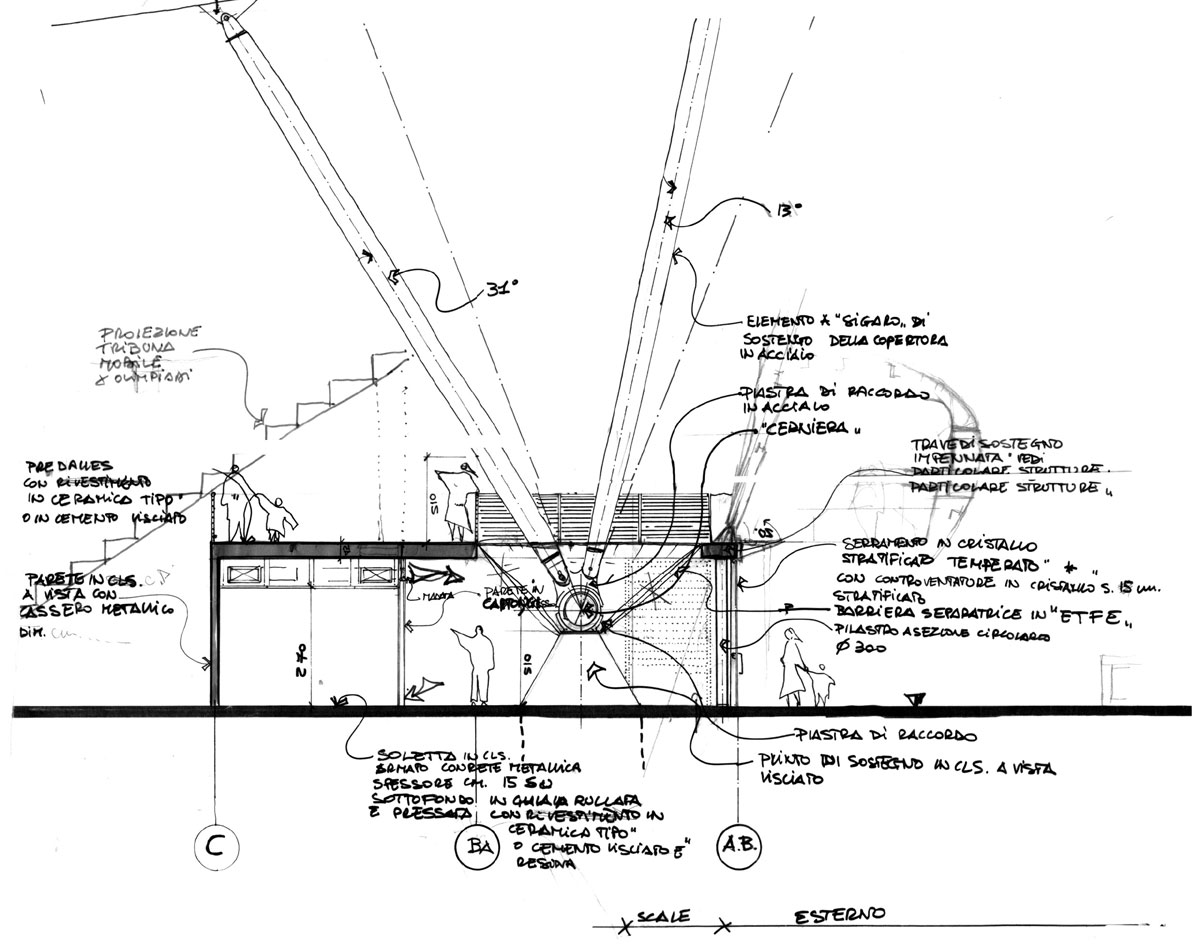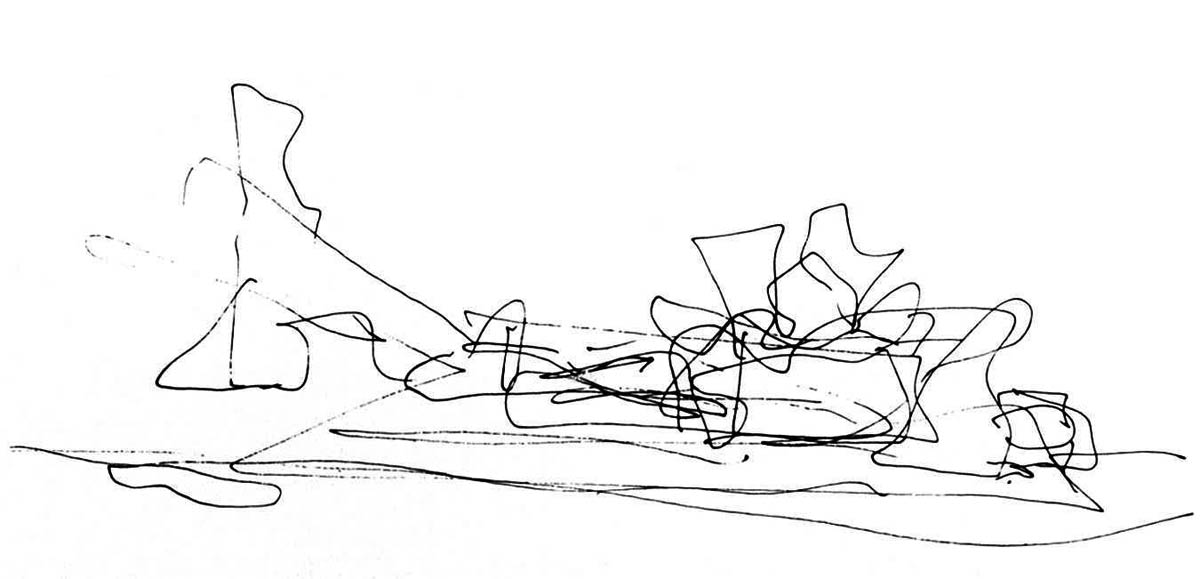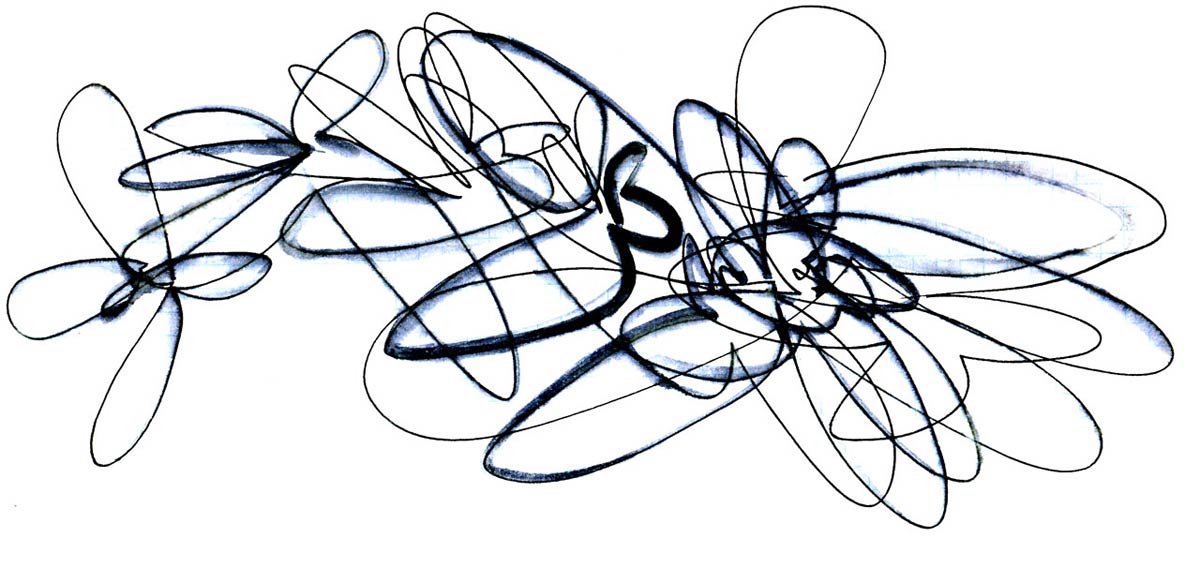
[Torino Oval Lingotto detail sketch by Renzo Piano]
Today’s post is part New Year’s resolution, part criticism, and part call to action. With a fresh, new year rolled out before us, it’s a good time to review the direction of design and discuss some opportunities to adjust the rudder of the architectural profession.
We noticed some undesirable patterns in the architectural world last year and it seems appropriate to have a conversation about the profession as a whole. To be blunt, architects, in their theoretical and esoteric pursuits, are at risk of becoming useless to society. We see this most clearly in the documents produced. Useful drawings that can actually be built from seem to be disappearing, with a growing reliance on secondary drawings, shop drawings, consultant drawings, and drawing services by the builder. In a nutshell, architects appear less capable at producing technical drawings that get a project done. The reasons behind this deficiency all too often involve a shortage of technical understanding, lack of accountability, and the avoidance of liability. The starchitect complex may also be at work, where artistic, film-inspiring (yet technically useless) sketches hold greater value than practical, legible architectural drawings.

[Guggenheim Bilbao concept sketch by Frank Gehry]
If we aren’t careful, people will start bypassing architects to get basic line drawings from cheaper sources. If the drawings necessary to permit and build a project are being produced not by the architect but by the consultants, trades, manufacturers and builders, there is little reason for a client to hire a licensed architect. Even less so if the accountability and liability rests with everyone but the architect. The whole situation begs the question: Are architects designing themselves out of the picture?
At the root of it all, most architects want to get their designs built, but the path to doing so seems constantly under attack. The distraction of design competitions, the pursuit of award ceremonies, and the growth of design festivals are just a handful of the factors sidetracking architects from focusing on the practical work. These activities tend to foster the artistic sketch (and everything it represents) at the expense of technical drawing.

[Edifici Toree Espiral concept sketch by Zaha Hadid]
Not that we have all the answers, but in the spirit of this blog, we’d offer that the course of architecture needs to tilt further toward pragmatism. With that in mind, here are our top 5 recommendations to architects for getting back on the path of usefulness.
1. Put more value on your time. Extracurricular design activities can quite easily be separated into two categories: the ones that are helping to realize designs, and the ones that are not. We recommend losing the ones in the latter category. Maybe getting published in a great design magazine significantly boosts the chances of realizing more projects. Maybe you feel that you’ve got a dead-ringer of a proposal to win a design competition for a project that will be built. Only you can decide where your time is most valuable. Be deliberate about it; don’t take something on just because it’s the industry protocol.
2. Work with purpose. We live in a world of immense stress on our planet and diminishing resources. At its core, every project should serve a meaningful function. Architecture should improve the built-environment without harming the natural environment. If you are doing something frivolous or fashionable, you are re-arranging the deck chairs on the Titanic.
3. Solve existing problems that need to be solved. Don’t create new problems (that don’t even need to be created in the first place) that will then require new solutions. We’re reminded of the Herman Hertzberger quote: “If you think you can’t make the world a better place with your work, at least make sure you don’t make it worse.”
4. Value pricing as part of the design process. Be educated about what things cost, work within real world parameters, and respect your client’s budget.
5. A proper understanding of the nuts and bolts is not optional. Work closely with the trades, manufacturers, and suppliers of a project to understand the technicalities of what is being drawn and specified. Produce drawings that are useful in the field. Master the detailing of a project.

[The Menil Collection detail sketch by Renzo Piano]
We like to put our money where our mouth is so we’re taking on the list above as a New Year’s resolution of sorts. In the year to come, the BUILD Blog will sharpen its focus towards more posts on technical drawings, the practical means to getting things built, and useful issues for architects and owners — all while sharing everything we know. Granted, we may still let a little pressure off from time to time with a rant or a cheeky post, but in general, we’ll be focused on posts that are useful, purposeful, and that advance the profession of architecture.
Cheers from Team BUILD, here’s to 2015.





